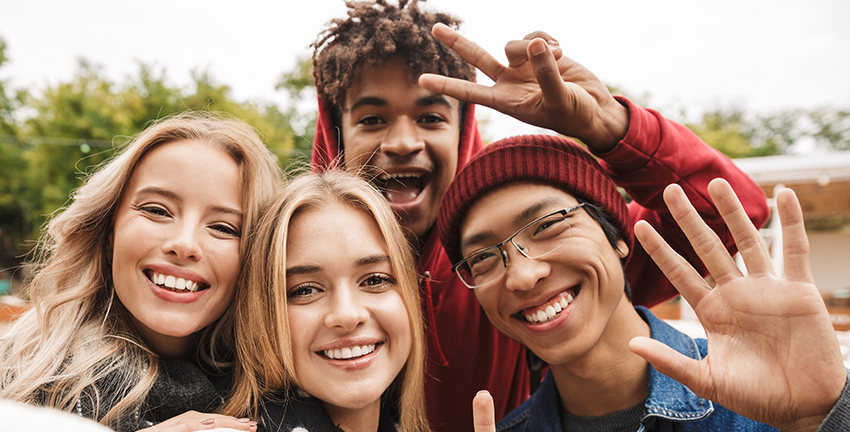
Social media can be a meaningful, positive resource for young people to strengthen friendships, build community, and create positive change.
Did you know…
- 95% of U.S. teens have access to a smartphone and are on social media platforms
- 40% of pre-teens are on social media platforms
- 1 in 3 teens seriously considered attempting suicide due to negative impacts of social media, such as poor sleep, unrealistic body standards, and cyberbullying
- 42 % of young LGBTQ people experience cyber-bullying resulting in negative health outcomes
As adults who work with youth, we should be able to discuss social media in knowledgeable and non-judgmental ways, so young people can make informed, safe choices.
Social Media & Harm Reduction
Finding creative, engaging, and sustainable approaches to teaching about social media is important. We can use harm reduction principles to help guide conversations about social media. Some tips include:
- Sharing information about the impacts of social media in a values-neutral way
- Engaging in balanced discussions of both the positives and negatives of social media
- Affirming and empowering young people regardless of their choices
- Providing resources that are created by youth for youth
Encouraging critical thinking is also a useful and creative approach when discussing social media. Ask young people about the media they enjoy, consume, and experience. Resources like Media Literacy Now suggest using the following prompts to guide the discussions you have in class:
- Who created this message?
- Who is represented? Who is not?
- What narratives about gender and sexuality does this portray?
- What expectations about beauty standards and body ideals does this portray?
Social Media & CSHE
Social media plays a major role in the way young people engage in friendships, as well as romantic and sexual relationships which makes social media literacy a vital part of Comprehensive Sexual Health Education (CSHE). When discussing social media in the classroom, consent, safety, and fun are key. Check out the tips below to share with these important concepts with your students:
Consent
- Ask for consent from everyone involved in the post before sharing any social media post
- Talk to a trusted adult if you are being pressured to share images, videos, personal information or experiences
- Start conversations about what and how much you share on social media with friends, romantic partners, and family
Safety
- Avoid including personal identifiers such as tattoos, piercings, or birthmarks, in photos and videos you post
- Keep in mind that others may have access to your phone and/or social media
- Avoid sharing your location or sensitive personal information when engaging with social media platforms
- Talk to trusted adults or seek support from vetted resources if you are experiencing cyber-bullying
Fun
- Ask students to consider the differences and similarities between the images and messages they receive and the reality of their lived experiences
- Ask young people to reflect on whether the social media platform they are using, or the content they are consuming, makes them feel good
- Encourage students to find platforms and communities that celebrate their experiences, identities, and interests
All young people deserve to have the necessary tools and skills to make informed decisions about their safety, boundaries, and engagement with social media. If we can normalize complex conversations about the impacts of social media, young people will be empowered to make the best decisions for their well-being, helping keep social media a positive place to build relationships and connect with community.
